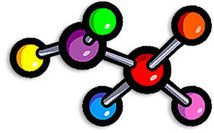
Biomes


Matter
Elements
Elements laboratory

Colombian Minerals

Nature cycles
Our planet is constantly changing. Natural cycles balance and regulate Earth and its atmosphere. Human activities can cause changes to these natural cycles.
Life on Earth is well adapted to our planet’s cycles. In our solar system, Earth is the only planet with air to breathe, liquid water to drink, and temperatures that are just right for life as we know it. Because our existence depends on our planet and its climate, we need to understand how what we do affects the Earth.
Cycles homework (Friday, October 25th, 2013)
PHOSPHORUS AND CALCIUM CYCLES

Food chain & Food web
Games and activities
Symbiotic relations

In a symbiotic relationship, two different species of organisms live close together and one member always benefits from the relationship. The other member may also benefit, or it may be harmed or unaffected by the relationship. There are three main forms of symbiosis: mutualism, commensalism and parasitism.
Click on the image for information.
Adaptations
All organisms have adaptations that help them survive and thrive. Some adaptations are structural. Structural adaptations are physical features of an organism like the bill on a bird or the fur on a bear. Other adaptations are behavioral. Behavioral adaptations are the things organisms do to survive. For example, bird calls and migration are behavioral adaptations.
Animal and Plant adaptations and behaviours
Ecosystems


Ecosystems vary in size. They can be as small as a puddle or as large as the Earth itself. Any group of living and nonliving things interacting with each other can be considered as an ecosystem.
Ecosystems: 11 StudyJams! Interactive Science Activities
Introduce and reinforce 11 important ecosystem-related topics, including food webs, symbiosis, and the water cycle, through these fun interactive activities. Grades: 3–5, 6–8
 Enjoy learning,
live Knowledge
Enjoy learning,
live Knowledge



















